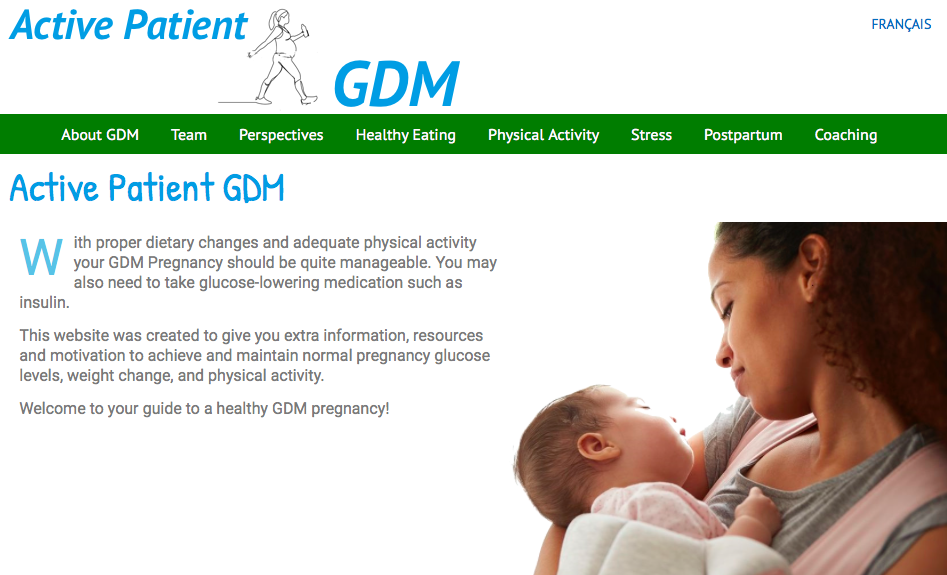Case Study: Optimized Healthcare Website
Optimizing Gestational Diabetes Support Through a Comprehensive Resource Platform
Client: Research Institute of the McGill University Health Centre
Project Overview:
The Research Institute of the McGill University Health Centre embarked on a study to explore if a combination of website-based resources, biosensor-based tracking, and health coaching could improve outcomes for women with gestational diabetes (GDM). This case study focuses on the development and implementation of a website-based information and motivational resource bank—a crucial component aimed at delivering accurate, accessible, and actionable content to users.
Challenge:
The primary challenge was to create a user-friendly, informative, and engaging website that could deliver a substantial amount of information without overwhelming users. The site needed to be:
- Accessible on multiple devices and browsers.
- Accurate, especially regarding critical information like blood sugar management.
- Adaptable to different learning styles (text, video, audio).
- Fully bilingual (French and English), with additional translations as needed.
Solution:
- Content Development and Structure:
- A panel of 30+ experts, including 13 physicians, developed the content universe, ensuring that it adhered to best practices in health, nutrition, and psychology.
- Content was organized into key topics: Nutrition, Physical Activity, Coping with Stress, Motivational Perspectives, and Postpartum Concerns.
- An organigram was created to visualize and refine the information architecture, ensuring that the content was “Mutually Exclusive and Collectively Exhaustive.”
- Design and User Experience:
- The site used a clean design with ample white space, friendly fonts, and easy-to-read text. Complex topics were hidden in expandable sections controlled by CSS.
- A Max Megamenu was implemented to handle the extensive Nutrition section, presenting it in a user-friendly, three-column layout.
- Videos, shot on the beautiful University of Western Ontario campus, were incorporated into the Physical Activity section, complemented by audio and PDF versions.
- Localization and Accessibility:
- The site was designed to be responsive, tested for various devices using Elementor, and maintained consistent aesthetics with the theme Generate Press.
- WPML Multilingual CMS plugin was utilized for bilingual support and to manage additional translations for Chinese and Vietnamese recipes.
- User Monitoring and Data Privacy:
- Access to the site was restricted to logged-in users, each provided with a username and password.
- Slimstat Pro plugin was employed for detailed traffic analysis, avoiding Google Analytics to ensure privacy.
- The site’s usability was maintained throughout the study to ensure data consistency, following the “No Code Before Content” principle.
Outcome:
The website was successfully launched and received positive feedback for its ease of navigation and clarity. The integration of various content types (videos, audios, PDFs) catered to different learning preferences, while the responsive design ensured a seamless experience across devices. The bilingual functionality, including additional translations, made the resource accessible to a diverse audience.
The site’s design and functionality provided valuable insights into user engagement and resource utilization, contributing significantly to the study’s objectives of improving GDM management.
Key Takeaways:
- Effective Content Delivery: Combining multiple content formats and ensuring clarity and accessibility were crucial for user engagement.
- Responsive Design: Testing across devices and maintaining consistency were essential for a positive user experience.
- Privacy and Usability: Using plugins like Slimstat Pro and WPML allowed for detailed analysis and multilingual support while respecting user privacy.

